When most people hear the word guinea- they are much more likely to think of a guinea PIG not a FOWL. But guinea fowl are gaining in popularity on homesteads and farms all over the country.
So first, what is a guinea? Guinea fowl are seed and insect eating birds that are members of the Numididae family. This type of poultry originated in Africa, but today domestic guinea fowl can be found all over the world.
This site contains affiliate links. If you make a purchase using one of these links, I may earn a commission. Please see my disclosure page for more information about cookies collected and our privacy policy.
Helmeted guinea fowl are the most common and popular type of domesticated guinea. They are quite unusual looking- I tend to go with the “they are so ugly they are cute” phrase when describing them! Most types of guineas have a distinct crest (helmet) on the top of their featherless heads and are somewhat “football shaped” in body style.
Guinea fowl come in a variety of colors including white, lavender, pearl, and pied. I love the pear feathers and they are great for crafts and jewelry making!
Why would you want to add guineas to you homestead? They have a long list of benefits including helping remove pests such as ticks, grasshoppers, locusts, flies, maggots, snails, and more. They may also help around the homestead by eating small snakes and rodents.
But what goes into raising guinea fowl? It is different than raising chickens? How do you get started?
Guinea Fowl: The Complete Guide to Raising and Care
If you are considering getting a flock of guinea fowl for your homestead, I highly recommend starting with day old keets. What’s a keet? Simply the name of a baby guinea!
Once you have an established flock of guineas you should be able to keep growing your herd by letting the adult guinea hens sit on their eggs or allowing a broody chicken to hatch guinea keets for you.
Getting Started with Guinea Keets
Raising guinea keets isn’t too hard, and if you have raised baby chicks or ducklings you are likely to know the drill.
Guinea keets will need to be kept in a brooder until they are older and fully feathered. This brooder should have the following:
- A heat lamp
- crumbled chick starter
- a chick waterer
Here’s more information on setting up a brooder box.
Guineas can take awhile to know their home, so if the weather permits and you have the place, put the brooder box in their final coop.
Guinea keets are pretty small, and you should put some marbles in the water until they are a little bigger to prevent drowning.
Like chickens, keep them with food, water, and under the heat lamp for about 6-7 weeks, raising the light up a little each week. Once they are fully feathered they should do fine without the light. Though if it is winter, you may want to give them heat outside at night still.
Raising Mature Guinea Fowl
Once your keets are fully feathered, you can start allowing them to roam outside of their home.
Guineas are a bit different than most homestead poultry because they are not quite as domesticated as we’d like to think. They are still very much a wild game bird and should be treated as such.
And I feel the need to tell you, just in case you don’t know much about these birds at all, guineas are loud. Really loud. So if you are in a neighborhood or live close by other people, that is a consideration. They will sound an alarm for all sorts of things, like a dog barking, a car driving by, the wind, etc. They will also sound an alarm for real things like predators….but they are kind of the bird that called wolf.
When you are ready to allow your guineas to roam, simply open the door to their coop. Do not take them out or herd them out the door. Simply open the door and leave them be. It may take a few days, but they will slowly get up the nerve to leave their home on their own.The adult birds are cautious and will take things slow when it comes to exploring.
Once they are comfortable with their surroundings they will start to roam further and further from home. But if you have raised them right, and kept them in their coop for at least 6 weeks they should come home each night.
Guineas can be fed laying pellets or crumbles, but they should be allowed to forage for most of their food. We used food to entice ours back in the coop at night. You want your guineas out there eating snakes and ticks- so don’t fill them up each morning with commercial feed!
As you can see, there’s not a lot that goes into caring for guineas- they need water, room to roam, and a safe place to live. But now let’s talk about some of the other things you may be wondering.
What Kind of Coop Do My Guineas Need?
Give your guineas a coop similar to your chicken coop. Provide them a safe, draft free coop with roosts and nesting boxes (though they will likely nest on the ground instead).
Guineas like to roost much higher up than chickens do, so place your roosts up high. My guineas liked to sleep in the rafters of our chicken coop.
Will My Guineas Come Home Every Night?
Maybe? Here’s the thing about guinea fowl. You may give them a coop and food. And they may choose to roost in the trees every night.
They are essentially wild, so you can give them what they need and then it’s up to them to use it.
Can I Raise Guineas and Chickens Together?
You can, BUT I would suggest raising chickens and guineas together from the start. And I wouldn’t advise that you keep guineas in a run.
They really should be free ranged all the time.
Are There Any Problems That Come With Raising Guineas?
Guineas are very hardy animals and they stay pretty healthy. Because they have resisted human’s quest to domesticate and improve they have almost no health issues.
BUT they are also not the smartest bird in the bunch, and you may find that because of their temperament and their roaming you have more issues with predators than you do with chickens or other poultry.
You can also check out my popular article on 5 Reasons NOT to Own Guinea Fowl, for a full list of why these birds might not be right for you.
How does raising guinea fowl differ from raising chickens?
Guineas are much more wild than chickens, and while they are both poultry, there are a lot of differences. Guineas are much more wild than chickens, they are more roaming, louder, can be much more territorial.
Guineas also tend to be more monogamous or semi-monogamous. They are more likely to get very attached to their mates, and often breed for life. They will also get very attached to their flock mates and stick together as a group. They will be very vocal and call for each other if they get separated- even if only by a fence.
How to Sex Your Guinea Fowl
Just like with chickens, sexing keets can be difficult to impossible. But as your guineas grow there are some signs that will help you tell the difference between male guinea cocks and female guinea hens.
For the most part, the outward appearance between and male and female guinea is the same with one small exception. As adults, the helmet and the wattles of a male guinea are larger than those of a guinea hen.
You can also tell by their cry. Female guineas will make a 2-syllable cry that sounds something like ‘Buck-Wheat”. Males however will make a one syllable sound/
These 2 things are the easiest distinctions to notice and should be sufficient in determining the males from the females in your guinea flock.
All About Guinea Eggs- Laying, Brooding, and Hatching
Guinea hens are seasonal egg layers and will lay an egg a day when the days are longer, around March through September.
The eggs are more pointed on one side and are very light brown with lots of little speckles.
Guinea eggs can be eaten the same as chicken eggs- though they are more rich tasting. Guinea eggs are smaller than chicken eggs with very hard shells. A good rule of thumb is to have 2 guinea eggs in place of one large chicken egg in recipes.
Learn more about eating guineas- both eggs and meat- on my article Can You Eat Guinea Eggs?
Guinea hens can and do go broody throughout the season. They will lay eggs on the ground, either in the coop or in the woods or tall grasses where they can be hidden from predators.
Guinea hens often lay their eggs in communal nests and also will take turns sitting on the eggs.
You can either collect the eggs daily for consumption or hatching or allow nature to take it’s course and let the guinea hens hatch their own eggs.
Guinea eggs will take 26-28 days for the keets to hatch.
If you are hatching using an incubator, care for the keets as outlined at the start of this article. If you are allowing a hen to hatch, let the mother do all of the caring and the keets that survive will be very hardy birds.
Tips for a Successful Guinea Fowl Flock
You don’t have to end up with problem guineas! Here are a couple of tips to try and prevent some of the issues you might have with your guinea fowl flock!
*Raise your guineas from keets- starting a flock in their permanent home is always best
*Keep your guineas locked in their coop for at least 6 weeks before letting them roam (another reason to raise them from keets!) so they learn where home is
*If you will be co-habitating with chickens- raise them from babies together (this didn’t work for us)
*Buy quality birds. Breeding matters- even with guineas! If you want good birds, buy GOOD birds
*Remember that guineas and chickens are not the same. Guineas must be free range and the are less domesticated than chickens. Don’t fight their nature
Want to know MORE about raising guineas? Guinea Fowl: Complete Guide to Raising Guinea Fowl can help you learn absolutely everything about this unusual bird!
You May Also Like:
How to Make Guinea Feather Earrings
How to Make a Guinea Feather Wreath
Profitable Poultry: Making Money With Chickens


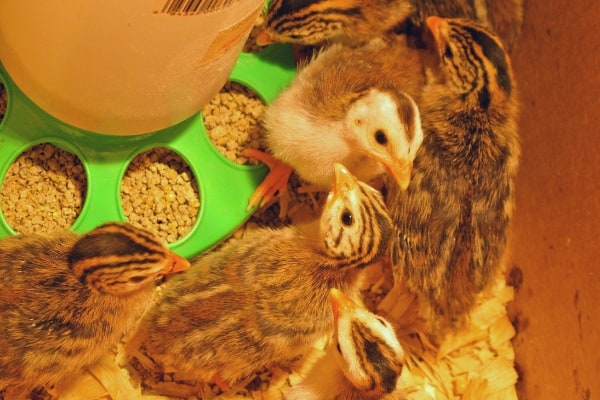
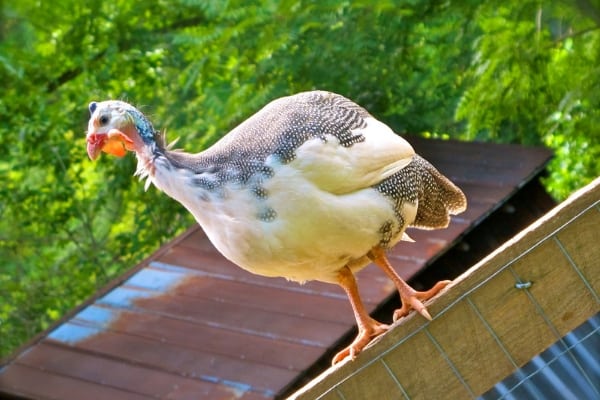
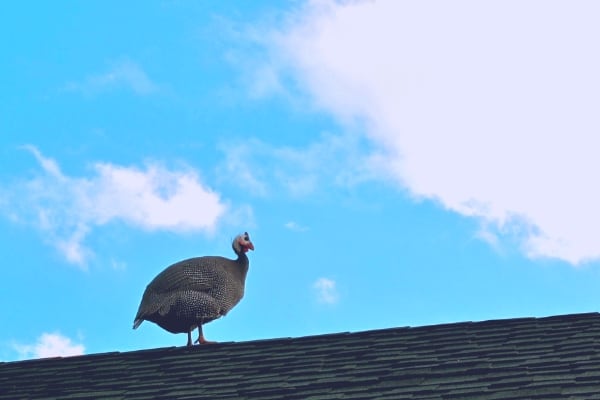
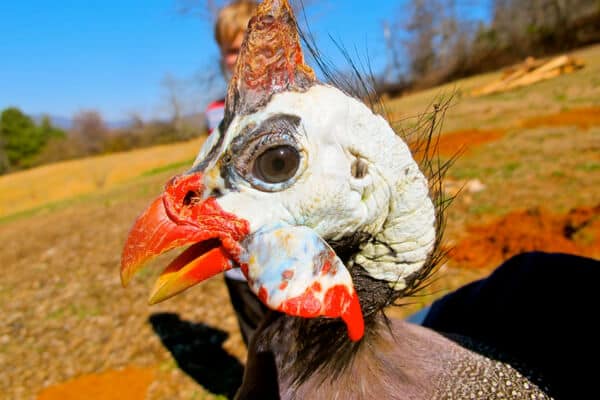
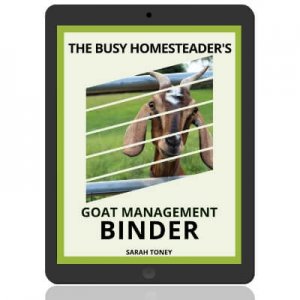

Big to you thanks for the necessary information.
I TOTALLY LLOVE MY GUINEAS. I HAVE 3 MALES AND 1 FEMALE. WE HAVE HAD THEM ABOUT 2.5 YEARS AND THEY WERE ADULT WHEN WE GOT THEM. WE KEPT THEM PENNED FOR 8 WKS. WE LET THEM OUT AT TEN IN THE MORNING BECAUSE OF HAWKS EARLY IN THE DAY AND THEY ARE READY TO GO IN FOR THE NIGHT ABOUT 7. WE ARE THINKING OF BUILDING AN AVIARY AND KEEP THEM IN ALL THE TIME. WOULD YOU RECOMMEND THIS AND IF SO ANY IDEAS OF STYLES OF AVIARIES?
I have 6, 8 week old keets along with 14 chicks. Well come to find out I have a rooster as well, wanted hens but no big deal, so I thought. I ordered to hatch. I know I have a least 1 maybe 2 Guinea cocks. Well, the guineas are ganging up on the roo. The guineas I put out they get right back in. I have separated the rooster with another hen for now, PLEASE any suggestions.
Also try a large mirror for the ladies, down on the ground up against a tree!ha! Ha! Fun to watch them primp!,but don’t raise them next to a hwy! They are bad about getting ran over! They are very nosey,and cars and trucks is a big draw!! Other than that they are great bug getters! We had large grass hoppers so bad you had to wear protective glasses to keep from losing an eye!! I do need to add the keeling are very sensitive, and if frightened can die from it,the mail carrier shock the box the chicks was in and I lost 20 of them,a very slow death their little back ends plug up! I tried everything to save them,,but the ones that lived and grew up would line up across the field and if a grasshopper flew up it was too bad! For that bug!
I started keets (3 days old) with chicks (5 days old) in a covered pen (8 ft across water tank). Allowed the birds to get used to each other. ^ weeks later I moved all the birds to the coop but restricted them to the coop. Several days later I opened the coop to the covered inside yard to roam in the grass area 10′ X 15′. This was for about a week then opened the chicken gate to the outer chicken yard. Within a couple of days I lost 1/2 of the guineas & soon the rest of the guineas had left though all the chickens remained. On a 160 acre with the tree line 1/4 mile away I had to at least see them there but no.
I did as you mentioned but the guineas didn’t pay attention to your guidelines.
I NEED HELP. I LOVE MY GUINEAS SO VERY MUCH. THEY WERE YOUNG ADULTS WHEN WE GOT THEM ALMOST THREE YEARS AGO. KEPT THEM CONTAINED FOR 2 MONTHS BEFORE LETTING THEM FREE ON THE PROPERTY. TOUGH WE HAVE 20+ ACRES THEY NEVER ROAM MORE THAN AN ACRE OR TWO FROM THEIR PEN. I HAVE 3 MALES AND 1 FEMALE. THEY HAVE BEEN INSEPARABLE UNTIL ABOUT A WEEK AGO. THAT IS WHEN TWO OF THE MALES AND THE FEMALE COMPLETELY CUT THE THIRD MALE OUT OF THE GROUP. HE WANTS WITH THEM SO MUCH. SO FAR WE ARE ABLE TO GET THEM ALL IN TOGETHER AT NIGHT. ANY SUGGESTION AS TO WHAT I CAN DO TO GET THEM ALL BACK TOGETHER AGAIN.
Hey guys, what’s up? I’m new here. Where should I start?
my guinea fowl lay 21 eggs and started became broody 3 days ago. i noted that the hens cant ‘ cover ‘ the whole 21 eggs, will those eggs not ‘cover’ be ‘hatched’
how frequent or times can guinea fowl lay eggs a year
Any ideas on how to keep the guineas from pooping on my front porch?
i built a barricade. its not very pretty but it works
I must say i enjoyed reading as much learning about this beautiful bird,i honestly cant outline its value enough.It in handy especially here at Alivalley Quarter Farm Nairbo Kenya.Many thanks.
I would like notes on the hatching of Guinea fowls
I am hatching Guinea Fowl at the moment to add to the 2 keets I already have. I absolutely love their features and their characters. I have always wanted to raise guinea fowl and now I have my dream.
I recently got six keets and I am considering where we will keep them. We live in MI on 75 acres so we have lots of room and we have a big barn with horses and rabbits in it so I was wondering if it is safe from most predators to teach them to roost up in the barn instead of locking them in a coop at night. I know they will probably choose where they want to go but I wondered if there was a method of teaching them to go in the barn at night. The middle section of the barn goes way up high to the Hay loft so lots of opportunity for them to get up high.
I just got 10 baby keets 2 weeks ago. I am so new at this but i love them. Do i have to let them go??? I talk to them and they run and look at me like. She crazy.
Hi, One of my guinea fowl hens is sitting on about 25 eggs. I snuck down when she wasn’t there and took three to put in an incubator. It seems she isnt in any hurry to go back to the nest. Do you think I have upset the whole thing by taking three eggs? Do you think she can sense that I have been there and now doesnt feel safe to go back?